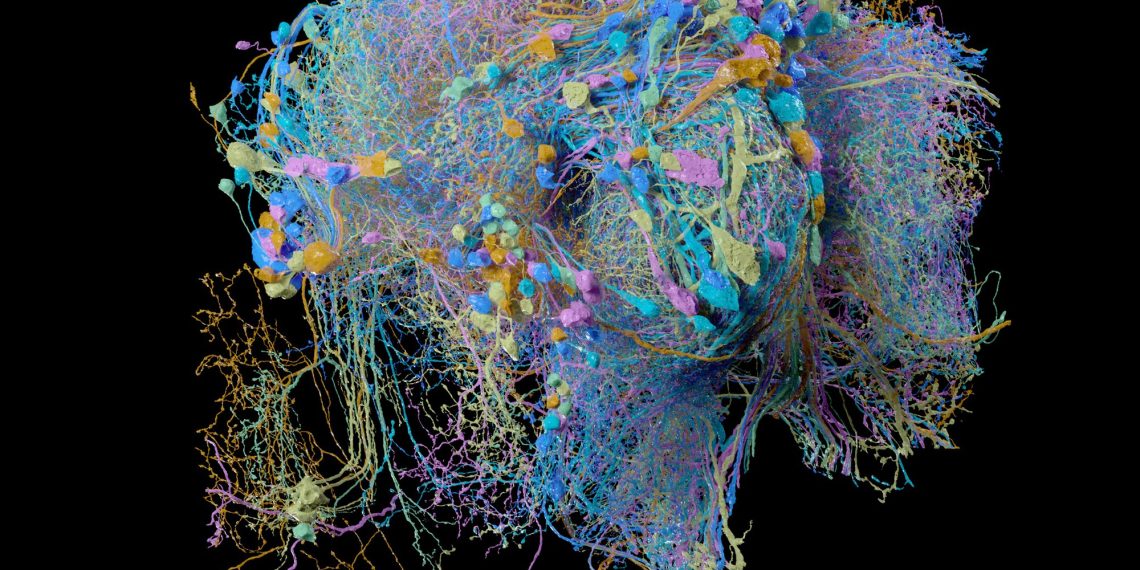Scientists have developed a virtual brain network that can predict the behavior of individual neurons in a living brain, potentially transforming business operations by making artificial intelligence (AI) systems more efficient and less power-hungry.
This breakthrough model, based on the fruit fly’s visual system, offers a way to test hypotheses on a computer rapidly, saving valuable time and resources for companies that rely on AI for decision-making and automation. Srini Turaga, a group leader at the Janelia Research Campus, explains, “Now we can start with a guess for how the fly brain might work before anyone has to make an experimental measurement.”
The approach, detailed in the journal Nature, suggests that AI systems could significantly reduce their energy consumption by adopting computational strategies found in biological brains. Jakob Macke, a professor at the University of Tübingen and co-author of the study, points out that a fruit fly brain is “small and energy efficient,” capable of performing numerous complex tasks with just 100,000 neurons. In contrast, modern AI systems require computers with tens of billions of transistors, consuming energy comparable to that of a small country.
For business leaders, this development could imply a future where AI-driven processes are not only more efficient but also more cost-effective. Ben Crowley, a computational neuroscientist at Cold Spring Harbor Laboratory, underscores the importance of making AI more power-efficient. Borrowing strategies from the fruit fly brain might be one way to achieve this.
A Model Based on Biology
The virtual brain network is the result of over a decade of intensive research on the fruit fly brain’s composition and structure, much of it conducted or funded by the Howard Hughes Medical Institute (HHMI). With detailed maps of every neuron and connection, the team, including Turaga, Macke, and PhD candidate Janne Lappalainen, created a computer model mimicking the fruit fly’s visual system.
They started with the fly’s connectome, a comprehensive map of neuronal connections, and utilized virtual versions of 64 neuron types connected as they would be in a fly’s visual system. The network analyzed video clips of various motions, and an AI system studied the neuron activity during these clips. The model could accurately predict neuron responses, matching those of real fruit flies that had viewed the same videos.
A Tool for Business and AI
The model has already proven useful in brain science and offers significant potential for business applications. By simulating brain activities, companies can refine their AI systems, making them more efficient and tailored to specific tasks. Future iterations of the model aim to encompass entire brain functions, providing even greater insights and applications.
However, businesses must consider challenges like the complexity of integrating such models into existing systems and the ethical implications of AI. Ensuring responsible and ethical use of these technologies is crucial to harnessing their full potential.
In conclusion, the virtual brain network inspired by fruit flies presents a promising avenue for making AI systems more efficient and cost-effective. By adopting these biological strategies, businesses can enhance productivity, reduce costs, and maintain a competitive edge in an increasingly AI-driven market.









